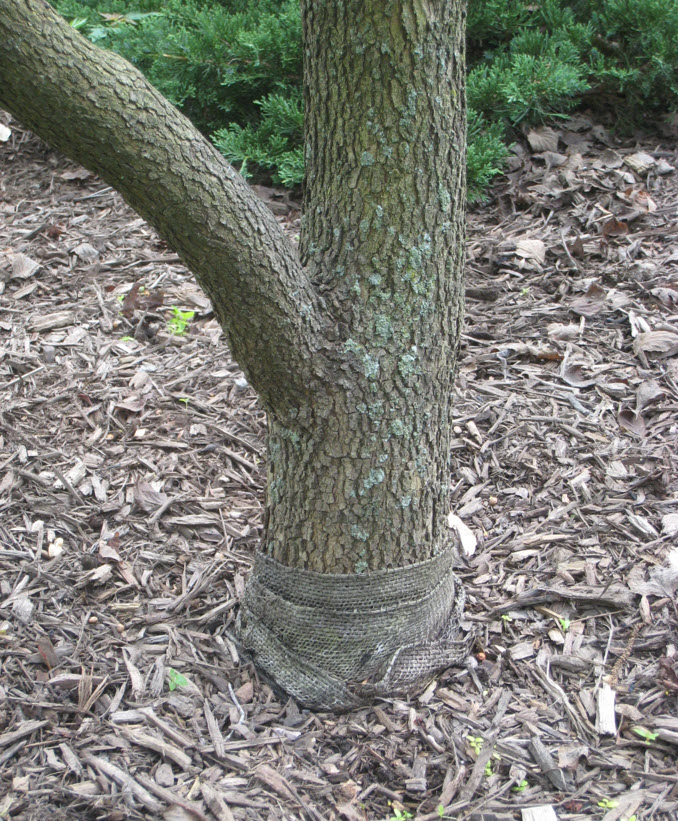I’d like to share with you a symptom that a standard flowering dogwood was showing. The tree is about 16′ tall and was transplanted on a project of mine about a year ago.
The time of year was summer and I noticed the leaves were off-color with some of them dropping. The tree had been doing well for months after being transplanted.
From experience I knew “a look” like this often means plant stress due to some impact on the root system.
Although a root system can be affected by a variety of insects and diseases, the first thing I check for is water damage. Roots kept too wet will decline and die and, eventually, so will the entire plant.
The gauge on the soil moisture probe verified extremely wet earth down by the roots. But that was only part of the problem.

Michael Hirsch, our plant health care consultant, emphasizes the importance of removing the heavy burlap from the top of the root ball.
If left on the plant it creates an unhealthy environment where disease and insects can develop. It also keeps the base of the trunk damp, which isn’t good either.
It was time to give this tree a break and get conditions back in its favor.
After pulling back the mulch I cut the sisal cord and removed all of the burlap. It was heavy, wet and semi-decomposed.
Underneath it all was a collection of insects that would have gotten any entomologist excited. This had not been a good environment for this tree.

I have to believe the dogwood felt immediately better once all that “stuff” was removed. Just look at the dampness in the bark where the burlap was.
I was also careful to replace just a 2 to 3″ layer of mulch on the surface and not up against the trunk.
What remained to solve was the wet ground this plant was struggling in.
Phases of this project were still underway and the sprinkler system had not yet been modified.
When I checked out the zones around the tree I discovered:
- The planting bed zone where the tree was planted was cycling every 3 days. Way, way too much.
- On top of the watering from the planting bed zone, the lawn zone was not adjusted for the re-designed area and was actually soaking the tree too. Talk about the “1 -2 punch”!

With the burlap “collar” removed and the irrigation fixed, (I shut the planting bed zone completely off, and adjusted the lawn heads to not hit the plantings), this dogwood now had a chance to recover.
It was summer when this tree started failing. It is now October and the dogwood is doing fine. The leaf drop stopped, color improved, and moisture levels in the ground are “normal”.
Plants are living things, and just like us they need the right conditions to remain healthy.
When you see a plant struggling first look to see what nearby conditions might be “extreme” and/or different from what this plant would normally grow in – that’s the essence of “plant health care”.

